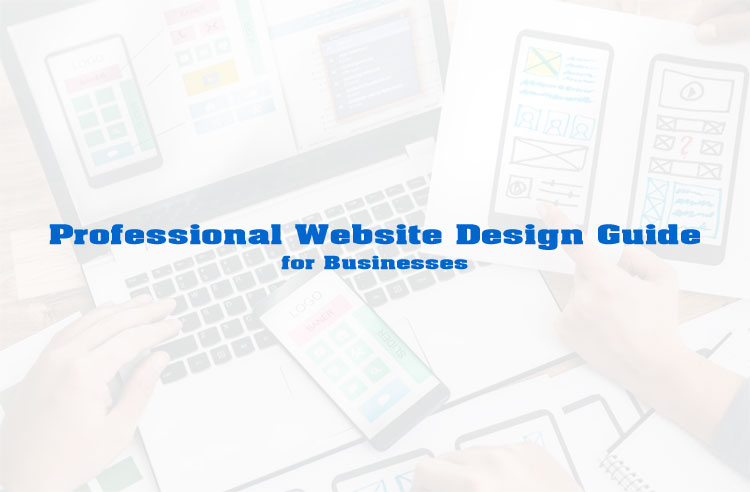Professional Website Design Guide for Businesses
- What Is Professional Web Design?
- How Viet SEO Designs Professional Websites
- 1. Create a Simple and Intuitive Interface
- 2. Optimize for Mobile Devices
- 3. Improve Page Loading Speed
- 4. Develop Engaging Content
- 5. Follow Modern Design Trends
- 6. Choose the Right Colors and Fonts
- 7. Optimize SEO for Better Search Rankings
- 8. Use High-Quality Images & Graphics
- 9. Integrate Social Media
- 10. Regularly Check and Maintain Your Website
- Why Is a Professional Website Important for Businesses?
- 1. Expanding Online Presence
- 2. Enhancing Credibility & Trust
- 3. Improving Communication & Customer Service
- 4. Supporting Marketing Strategies
- Conclusion
What Is Professional Web Design?
A professional website must meet the following criteria: a modern, user-friendly interface (UX/UI), fast load speed, mobile responsiveness, strong SEO foundation, clear navigation, and secure functionality. A trusted Vietnam SEO company emphasizes that professional web design is not just about visual appeal—it’s about creating a strategic, optimized platform that attracts visitors, builds trust, and drives business results.
A professional website must meet the following criteria:
- Aesthetic and User-Friendly Interface: The design should be visually appealing, modern, and easy to use. Elements like colors, fonts, and layout should be consistent with the brand identity.
- Optimized Functionality: The website must run smoothly on both desktops and mobile devices (responsive design). Clear navigation helps users find information quickly.
- High-Quality Content: Content should be professionally presented, easy to read, engaging, and tailored to the target audience. Images, graphics, and videos should be used effectively to enhance user experience.
- Fast Loading Speed: Slow-loading websites can drive customers away. Optimizing images, source code, and using technologies like CDN can improve performance.
- High Security: The website must be protected against cybersecurity threats, using SSL certificates and strong security measures to safeguard user data.
How Viet SEO Designs Professional Websites
Designing a professional website involves more than just visual appeal—it requires strategic planning, user-focused functionality, and SEO best practices. Start by defining your website’s purpose, organizing clear navigation, and creating quality content that aligns with your brand. Ensure your site is mobile-friendly, fast-loading, and optimized for search engines.
Viet SEO agency recommends combining strong UX/UI design with technical optimization to deliver a seamless user experience and improve your site’s visibility and performance in search results.
1. Create a Simple and Intuitive Interface
- Keep the layout clear and avoid clutter.
- Navigation buttons and menus should be easily accessible for quick user interaction.
2. Optimize for Mobile Devices
- Ensure the website displays well on all screen sizes.
- Responsive design improves user experience and boosts SEO rankings on Google.
3. Improve Page Loading Speed
- Reduce image size while maintaining high quality.
- Use caching, file compression, and code optimization to enhance loading speed.
4. Develop Engaging Content
- Use professional, clear, and audience-appropriate language.
- Present content with clear headings, short paragraphs, and visual highlights.
5. Follow Modern Design Trends
- Implement trends like parallax scrolling, animations, and minimalistic design.
- Maintain a spacious layout with well-utilized white space to avoid a cluttered feel.
6. Choose the Right Colors and Fonts
- Colors and fonts should align with brand identity for a professional look.
- Avoid excessive font variations or overly vibrant color schemes that may cause distraction.
7. Optimize SEO for Better Search Rankings
- Research keywords and optimize titles, meta descriptions, and heading tags (H1, H2, H3…).
- Create high-quality content, improve loading speed, and enhance user experience to rank higher in search results.
8. Use High-Quality Images & Graphics
- Ensure images are sharp and appropriately sized to optimize loading speed.
- Engaging graphics help increase user interaction and retention.
9. Integrate Social Media
- Add sharing buttons for Facebook, Instagram, LinkedIn, etc., to expand customer reach.
- Connect with marketing channels for a unified brand strategy.
10. Regularly Check and Maintain Your Website
- Conduct periodic audits to detect errors and improve performance.
- Ensure smooth operation across all browsers and devices.
Why Is a Professional Website Important for Businesses?
A professional website is essential for building trust, attracting new customers, and staying competitive in today’s digital marketplace. It serves as the central hub for your brand, showcasing your products, services, and values 24/7. A well-designed site also improves user experience and supports lead generation.
Vietnam SEO highlights that an SEO-optimized, mobile-responsive website not only enhances your online presence but also drives long-term growth by increasing visibility, engagement, and conversions.
1. Expanding Online Presence
A website is a crucial digital channel that helps businesses reach potential customers on the internet.
2. Enhancing Credibility & Trust
A professional website creates a strong first impression, making customers feel more confident in the business.
3. Improving Communication & Customer Service
Features like chatbots, contact forms, and live chat facilitate seamless interaction with customers.
4. Supporting Marketing Strategies
Websites play a vital role in executing SEO campaigns, Google Ads, and content marketing strategies effectively.
Conclusion
A professional website not only helps businesses make a strong impression on customers but also serves as a powerful tool to build brand identity, increase revenue, and expand market reach. Partnering with a reputable website design company like VietSEO company, while focusing on appealing design, high-quality content, SEO optimization, and improved user experience, will help you build an effective website and gain a strong competitive edge in the digital age.



